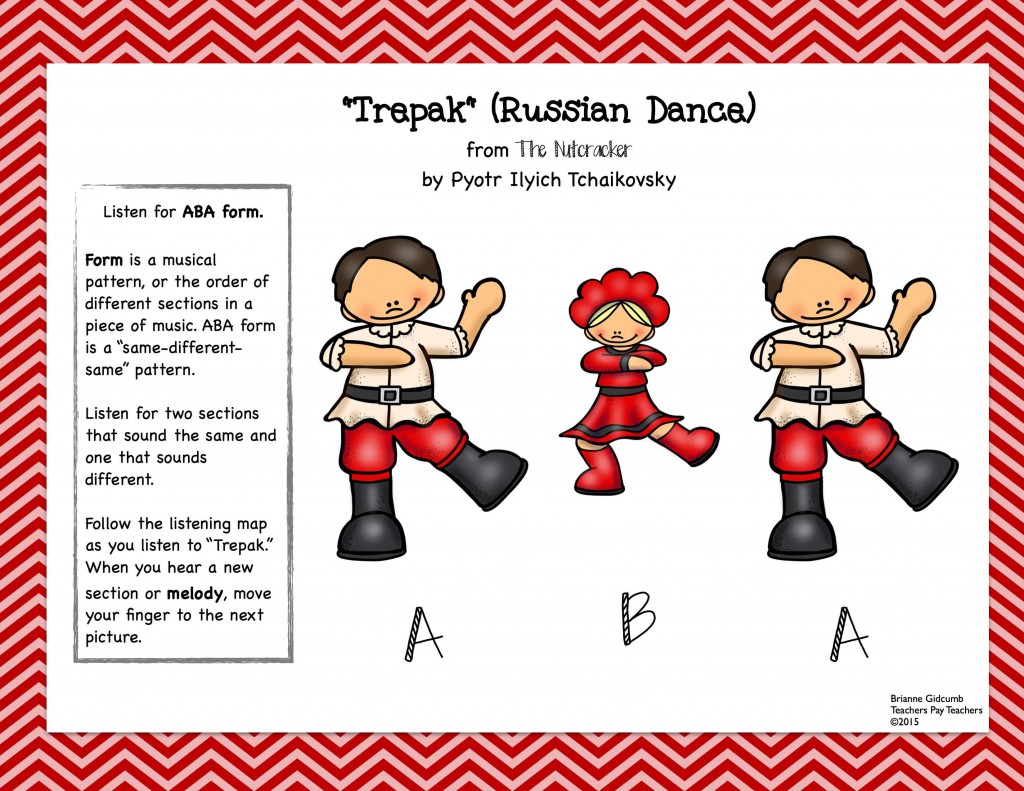Mapping Pattern: A Trepak Listening Map
2 Min Read • Arts Integration
Earlier this year, we explored how listening maps are a visual representation of a piece of music. It’s also a great strategy that can help students engage with a piece of music and organize what they hear in graphic form.
There are a number of elements of music you might highlight such as form, instrumentation, dynamics and tempo. They’re tailored to serve as visual representation of any given musical work to organize the aural experience for students.
Different Strategies
There are different strategies for engaging students with a piece of music through a listening map. They help to engage kinesthetic learning (visual learners too!). They also allow students an interactive experience with a piece of music. You can also flip the listening maps experience, having students create their own visual representation of the organization of a piece of music.
This month, I’d like to share with you a simple listening map. It will help guide your students through a lesson plan integrating pattern and music through music from The Nutcracker. “Trepak” (Russian Dance) was always one of my favorite December lessons with my young musicians back in my days in the music classroom. Why? The simple ABA pattern of this piece is a great way to reinforce the concept of form in the music classroom. It’s also a natural way to integrate Standard for Mathematical Practice 7: Look for and make use of structure.
Listening Maps Resources
You can find a lesson plan idea in Creating Patterns: Mathematical Practices through the Arts, and today, for you, our EdCloset readers, I’d like to share a listening map that might also help guide your young listeners, provide visual structure to aural information, and engage them in active listening.




